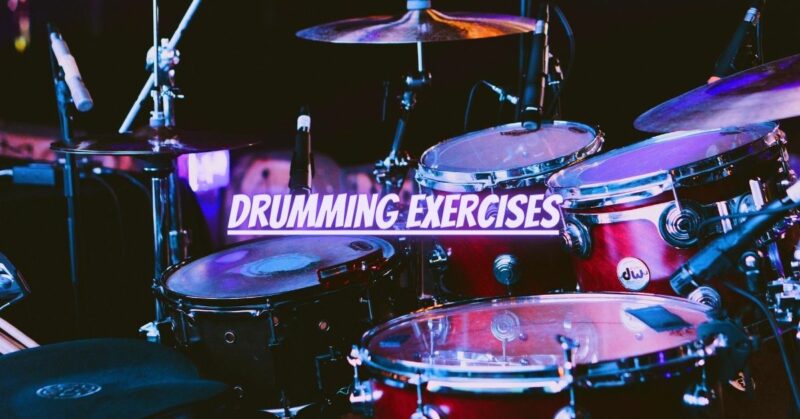Drumming exercises are an essential part of a drummer’s practice routine, helping to improve technique, coordination, and musicality. Regularly incorporating exercises into your practice sessions can strengthen your drumming skills, expand your rhythmic vocabulary, and enhance your overall musicianship. In this article, we will explore a variety of drumming exercises designed to target different aspects of drumming, allowing you to develop a well-rounded skill set.
- Warm-Up Exercises: Start your practice session with warm-up exercises to loosen your muscles, increase blood flow, and prepare your body for drumming. Begin by lightly stretching your arms, wrists, and fingers. Then, perform exercises such as single-stroke rolls, double-stroke rolls, and paradiddles at a slow and controlled tempo. Focus on maintaining evenness, consistency, and relaxation in your strokes.
- Technique-Building Exercises: Technique-building exercises focus on developing control, speed, and precision in your drumming. Work on exercises that isolate specific drumming techniques such as single strokes, double strokes, flams, and drags. Practice these techniques on different drums and cymbals, gradually increasing the tempo while maintaining clarity and accuracy. Utilize a metronome to improve your timing and control.
- Limb Independence Exercises: Limb independence exercises help develop coordination and independence between your hands and feet. Start with simple exercises such as playing a steady hi-hat pattern with your foot while playing different rhythms with your hands on the snare drum. Gradually increase the complexity by incorporating different drum voices and syncopated rhythms. This will enhance your ability to play multiple patterns simultaneously.
- Rudimental Exercises: Rudiments are the foundation of drumming technique and provide a wide range of patterns and variations. Practice rudiments such as single strokes, double strokes, paradiddles, flam accents, and Swiss army triplets. Start slowly and focus on maintaining evenness, clarity, and control. As you become more comfortable, gradually increase the speed while preserving the quality of your strokes.
- Groove and Rhythm Exercises: Groove and rhythm exercises focus on developing a solid sense of time, feel, and groove. Practice various styles such as funk, rock, jazz, and Latin, and experiment with different grooves, fills, and subdivisions. Use play-along tracks or metronomes to stay in time and lock in with the groove. Focus on playing with a consistent and relaxed feel, paying attention to dynamics and accents.
- Independence and Coordination Exercises: Independence and coordination exercises help you synchronize your movements and play complex patterns effortlessly. Work on exercises that involve different rhythms played by each limb, such as playing a jazz ride cymbal pattern with your right hand, a snare drum pattern with your left hand, a bass drum pattern with your right foot, and hi-hat accents with your left foot. Gradually increase the difficulty to challenge your coordination skills.
- Musicality Exercises: Drumming is not just about technical proficiency; it’s also about musical expression. Practice exercises that focus on dynamics, phrasing, and musical interpretation. Experiment with accenting different beats, adding ghost notes, and exploring various dynamics within a groove or fill. Play along with songs from different genres and styles to enhance your musicality and adaptability.
Conclusion: Incorporating a variety of drumming exercises into your practice routine is essential for continuous improvement and growth as a drummer. Whether you’re focusing on technique, coordination, groove, or musicality, regular practice of these exercises will help you develop a strong foundation, expand your skills, and become a versatile and well-rounded drummer. Remember to start slowly, maintain focus on proper technique, and gradually increase the difficulty as you progress. With dedicated practice and a commitment to ongoing development, you’ll see significant improvements in your drumming abilities.


